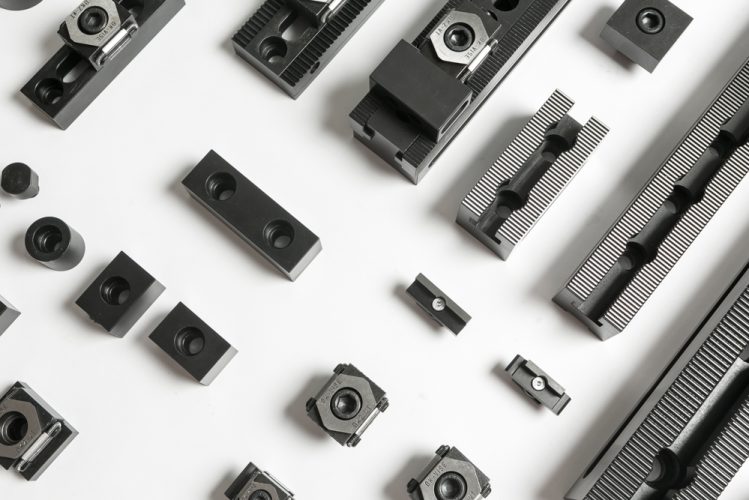In recent years, machine shops have paid more attention to both material flows and the attachment of workpieces in their machine tool purchases. Automatic pallet change is also being increasingly utilized more with vertical machine tools.
It is becoming more common to incorporate a pallet pool with the machine to carry out even long unmanned work cycles, and many within the industry are also considering when a full-blooded Flexible manufacturing system (FMS) system would be a sensible investment. All of these technologies offer completely new possibilities with significant improvement in plant utilization and efficiency, but at the same time also place new demands upon the fixturing concept system used.
DENSITY OF PACKING OF WORKPIECES
As soon as NC machines hit the market, it was realized that due to their large size, the traditional machine vise is very rarely suitable for attaching batches larger than one piece. The development of the low profile clamp at OK-VISE Oy in the early 1980s became intrinsic part in overcoming this problem and was quickly adopted industry wide. Thanks to its small size, the filling rate of the machine could be increased – in other words, the machine tool could accommodate more workpieces at a time. Typically, the workpiece setup is then in a matrix formation. As a result, the average workpiece loading, unloading and tool change times decreased radically.
For example with the advent and increasing use of four-axis machine tools, the workpiece can usually be completed with two set ups when traditionally 6 manual set ups were required (at worst)
Since then, in some applications, the priorities have continued to evolve, necessitating a parallel development in fixturing solutions to keep pace. For example with the advent and increasing use of four-axis machine tools, the workpiece can usually be completed with two set ups when traditionally 6 manual set ups were required (at worst). This has led to more and more four-axis machines clamping workpieces in a row instead of a traditional matrix typical in three-axis machining.
In five-axis machines, on the other hand, the goal is often to machine the workpiece from all possible directions. The simplest and most common way is to clamp one piece at a time to allow the spindle and tool to move freely, this in turn has also driven fixturing solution development. In most cases, however, two set ups are still required per finished workpiece.

SET UP CHANGE EVOLUTION
The Fixturing Concept product family, developed and manufactured by OK-VISE Oy, includes numerous fixturing components that can also be used to clamp very challenging parts.
The system is modular, and many pieces can be changed by moving the positioning elements. These include stopper modules, side guides, and riser blocks. The fixturing components are based on and evolved from the OK-VISE low profile clamps.
When the workpiece is complex in shape, dedicated fixturing must be used. In this case, many machine shops consider that the most sensible option is to build a fixture on the plate and change the fixture with some manual quick-lock method or zero-point clamping, which can also be applied to a fully automated fixture change.

AUTOMATION
Increasingly the industry is moving towards unmanned production. Today automation related to fixtures usually involves two approaches:
Either the fixture plate ( “fixture pallet” ) or workpiece clamping is automated. This changes also the way how raw material and unfinished goods are buffered for next work steps.
If an automated pallet change system is in use – like for machine pallets or zero-point plates – then the entire fixture is changed with the pallet. The workpieces in the fixtures are clamped to fixtures manually, eg during a day shift.
If the workpiece is unloaded and loaded automatically, for example with a robot, an automatic clamp is required, which historically has been operated mainly with hydraulics.
Automation is one of the priorities of OK-VISE Oy’s development, and in 2022 we have been excited to introduce electrical clamping system, not only suitable for modern machine tool systems, but also enables completely new ways of changing setup and workpiece loading.
INTRODUCTION TO WORKHOLDING
For people who want to study basics of workholding in machining centers, we have made a video Workholding today – an introduction by OK-VISE

